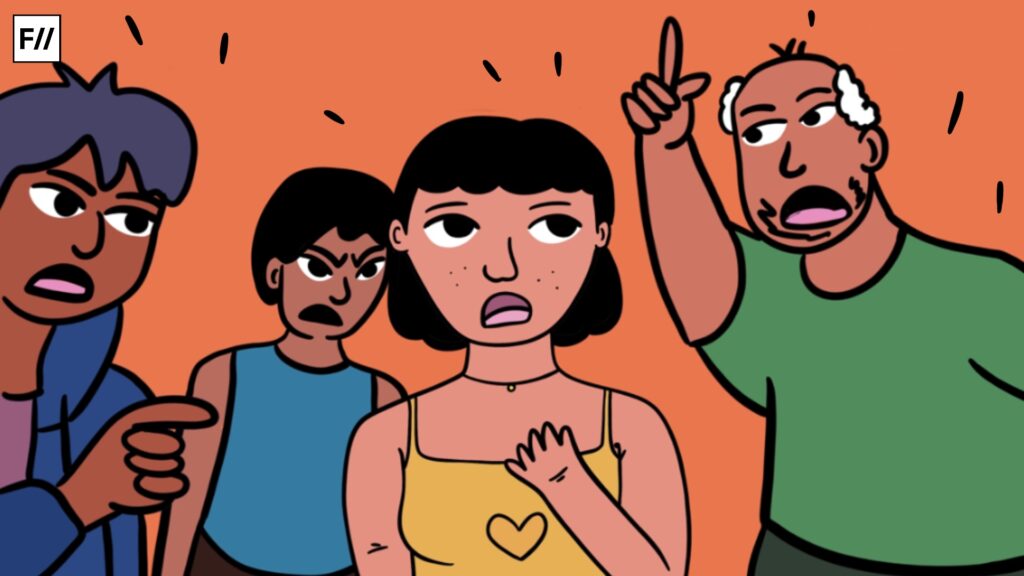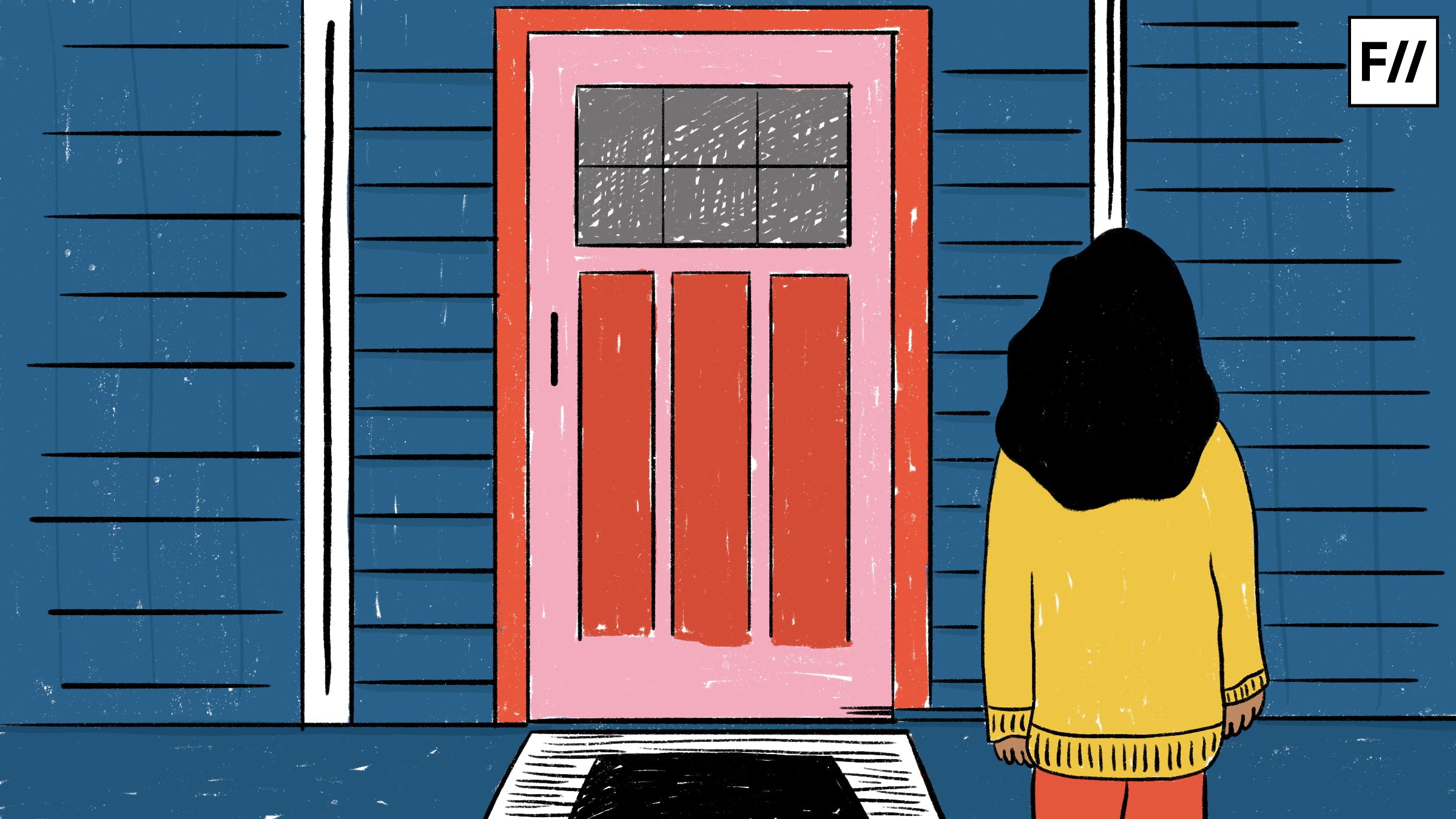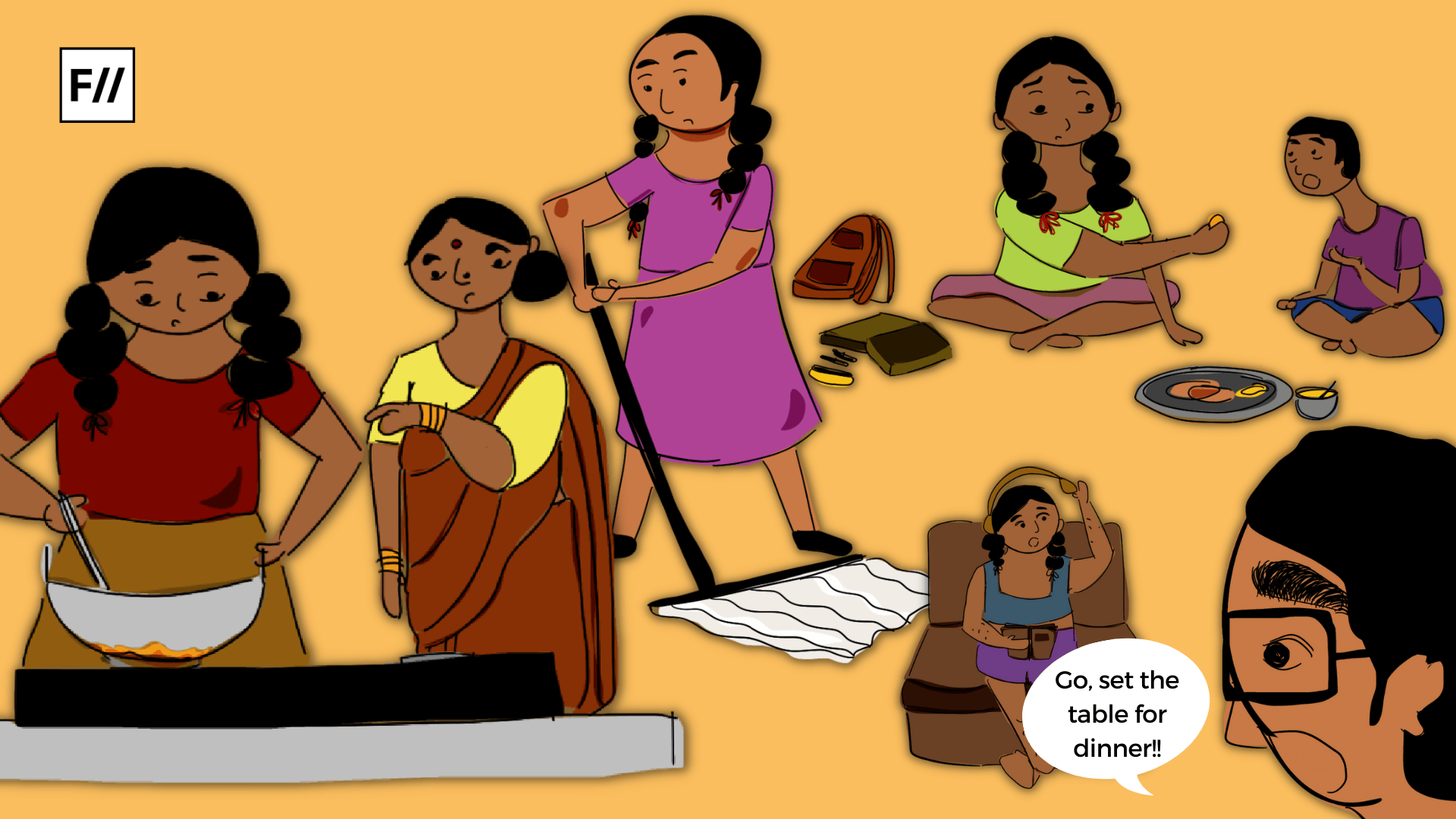Patriarchy is a social institution and a structure that encourages and positively reinforces men to thrive upon the exploitation and oppression of women, that forces women to normalize their subordination, that necessitates all men to not pay any heed to their own emotional health and subscribe to hypermasculine standards prevalent in society. Such an institution is, sadly, omnipresent and dictates the behaviours, attitudes and perceptions of individuals irrespective of their class, religious, caste or ethnic identities.
I have had the misfortune to observe and experience the influence of such an institution across various stages of my life. My latest observation of the predominant position acquired by such an institution was demonstrated through the survey forms designed by the civil society organization that I engage with. Such a form had been designed to comprehend people’s awareness towards, understanding and comprehension of and solutions to violence against women and children. Such a survey indeed helped to reveal that women’s understanding of violence was not limited to only forms of physical and sexual violence but also included verbal, emotional and financial abuse among others. Such a finding was indeed exhilarating. For decades and decades, the understanding of violence was only limited to sexual and physical abuse. The other forms of violence, including the abuse that was infiltrated upon women within the household, had been normalized in our society and were largely regarded as routine affairs of the household. Such normalization had been caused by the internalization of the power relations that had been set by the hegemonic structures of class, caste, patriarchy and religion.
For decades and decades, the understanding of violence was only limited to sexual and physical abuse. The other forms of violence, including the abuse that was infiltrated upon women within the household, had been normalized in our society and were largely regarded as routine affairs of the household. Such normalization had been caused by the internalization of the power relations that had been set by the hegemonic structures of class, caste, patriarchy and religion.
Also read: Home Sweet Home: Children Are The Collateral Damage In Our Quest For ‘Picture Perfect Homes’
When I refer to power, I draw from Weber’s understanding of it as the ability of some actors in society to impose their wills on others despite their efforts to provide resistance to it. While there exist several forms of authority, the normalization of violence has been made possible due to the wide acceptance of traditional authority and its legitimization in society. Patriarchy and all its institutions have influenced all spheres of interactions in society and have also legitimized actions and judgements around normality. Such an institution has, thus, validated women’s subordination and has routinely subjected women being subjected to various forms of violence and abuse as part of their everyday life.
Such an institution has not only harmed women. It has, through its legitimization of hypermasculine traits and behaviours, normalized and even positively reinforced those men who are emotionally obsolete and who manifest the stereotypical understanding of strength as violence and aggression. The healthy expression of emotions too had become synonymous to displaying effeminate characteristics. All those men who did not conform to such characteristics continue to be bullied, abused and harassed. The legitimization of the patriarchal structure had led to subordination and oppression of men too in more ways than one.
The awareness among women about the different forms of violence may have resulted from the increased exposure to video and audio content across different online platforms made available through affordable, low-cost smartphones. While the capitalist agenda to increase the profitability off smartphones had led to increased availability of smartphones across the rural areas of the country, such availability did not always coincide with equal access across genders to such products. Men still enjoyed much greater access to smartphones than women. A study conducted in the John F. Kennedy School of Governance at Harvard University confirms the same and shows that there exists a 33% gender gap in mobile ownership in the country. However, the availability ensured that women were not completely alienated from the product and were able to access it in their limited leisure time from their gendered responsibilities.
Such access ensured greater awareness. Apart from that, the organization’s interventions in such villages with the population, over a period of time, along with their conversations around gender-based discrimination and violence ensured that the women were not oblivious to the existence of different forms of violence and abuse apart from physical and sexual abuse. While, presently, they did acknowledge the existence of different forms of violence and abuse, their position within the patriarchal structure and the socialization undergone by them ensured their ignorance to their home being a site where inequality is produced and reproduced, where patriarchal norms are normalized and routinized, where violence is perpetuated in more forms than one.
Despite acknowledging that various forms of violence, especially domestic and emotional abuse along with restrictions on mobility and accessibility to economic resources, is perpetuated at home, when asked about identifying unsafe places in the village, none of them recognized their home to be one such space. A study provides evidence for the same by arguing that nearly 99.1% of women in the country do not choose to report sexual violence committed against them by their husbands. The popular idealization of home as a safe haven has resulted in women blindly negating it as a space where violence is perpetuated, where inequality is reinforced.
Such an idealization, I believe, is a result of prioritizing and glorifying kinship ties as a source for comfort, warmth, reciprocation, love and sharing confidential information without fear. The idealization of one’s home as a safe haven has also led to women and men routinizing the gendered roles and responsibilities within the household and normalizing the violence that takes place within the household. Despite the violence and abuse faced within the parameters of such ‘safe haven’, none of them had reported such a space to be an unsafe place and the need to receive protection from such a space.

Also read: The Institution Of Family: Assignment Of Gender Roles Begin At Home
To be able to end domestic violence, I believe that it is consequential to increase the awareness of women and men towards home too being a space where inequality is reinforced and perpetuated. Without such awareness and conversations along such lines, the possibility of seeing an end to domestic abuse is meagre.
To be able to end domestic violence, I believe that it is consequential to increase the awareness of women and men towards home too being a space where inequality is reinforced and perpetuated. Without such awareness and conversations along such lines, the possibility of seeing an end to domestic abuse is meagre. Women can demand protection from necessary stakeholders within the law and governing institutions only when they recognise the abuse that is perpetuated against them within the constraints of the four walls when they distort the patriarchal understanding of a safe haven wherein women are neglected, subordinated and abused.
Sampurna Sarkar currently works at Breakthrough India and takes a deep interest in gender, human rights and intersectionality. You can find her on Instagram.
Featured image source: Shreya Tingal/Feminism In India





What patriarchy? Women have all the privileges in society. When a ship is sinking, women have lifeboats reserved for them, women are saved first in hostage situations, women are rescued first from burning buildings, women get to spend men’s earnings, women are preferred in divorce courts, women are handed child custody in the majority of cases, women get less jail time for the same crimes committed by men, innocent men rot in jail in false cases, society laughs at male victims of domestic violence, no shelters for male victims of domestic violence, media does not cover men’s issues, news reporters announce deaths of ‘women’ and children, no one cares about men’s deaths, majority of war deaths are of men (97%), majority of workplace deaths are of men (93%), majority of suicides are of men (80%), majority of homicide victims are men (77%), majority of homeless are men, most dangerous jobs are worked by men, more men die from prostate cancer than women from breast cancer yet no awareness for prostate cancer, majority of funding is spent on women’s health, less deserving women get hired over more deserving men if they are pretty, households are controlled by mothers-in-law, girls are treated better than boys in schools and colleges, seats in buses and metros are reserved for women, men’s life savings are spent in alimony and child support payments, even in two income families men bear the monetary burden, men face mandatory conscription, men are victims of paternity fraud, women receive the same social standing as their husband overnight after marriage, a jobless man is a loser but a jobless woman is a homemaker, men suffer from hypertension due to work related issues, men have shorter life expectancy, men work longer and die younger, men are reduced to disposable ATMs.